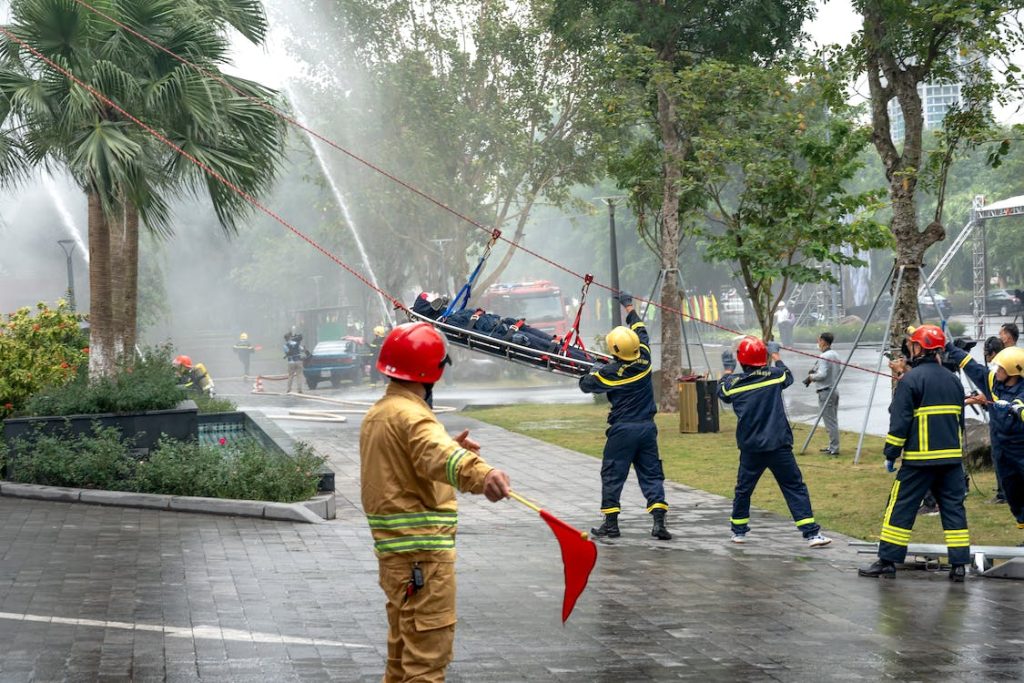
A rescue kit is a collection of tools and equipment that are assembled and organized in advance to assist in rescue operations. The contents of a rescue kit will vary depending on the specific situation and the types of rescue operations that are anticipated.
Rescue kits are typically assembled by trained rescue personnel and are designed to be easily accessible in emergency situations. They are an important component of emergency situations and can help rescue teams respond more effectively and efficiently to a wide range of rescue scenarios.
Benefits Of Having A Rescue Kit In Emergency Situations:
Rescue kits are an essential tool for emergency preparedness and can help rescue teams respond more effectively and safely to a wide range of rescue scenarios. Following are the benefits of having a rescue kit in an emergency situation.
Invaluable investment: A rescue kit contains all the necessary tools and equipment that rescue teams need to perform rescue operations. When rescue teams have all the necessary tools and equipment, they are better prepared to respond quickly and effectively to emergency situations. That’s why these rescue kits are an invaluable investment.
Prevent Accidents: Rescue kits often contain specialized equipment designed to enhance the safety of rescue personnel and those being rescued. For example, harnesses, ropes, and pulleys can be used to safely lower someone from a height, while self-contained breathing apparatuses can provide fresh air in hazardous environments. Having the right safety equipment on hand can help prevent injuries or further harm during the rescue operation.
Efficiency: When rescue teams have all the necessary tools and equipment in one place, they can respond to emergency situations more efficiently. They can quickly access the tools they need and begin the rescue operation without delay. This can save time and potentially save lives.
Adaptability: Rescue kits contain a variety of tools and equipment that can be used in different types of rescue scenarios. This adaptability allows rescue teams to respond to a wide range of emergency situations, whether it’s a wilderness rescue, a confined space rescue, or a water rescue.
What Are Essential Content Of A Rescue Kit?
The contents of a rescue kit will vary depending on the specific type of rescue operation and the needs of the rescue team. However, some essential contents of a rescue kit may include:
First aid supplies: This may include items such as bandages, gauze pads, antiseptic wipes, and adhesive tape.
Communication devices: This may include items such as a two-way radio, a whistle, and a signaling mirror.
Lighting tools: This may include items such as a flashlight, glow sticks, or headlamps.
Ropes and cords: This may include items such as static or dynamic ropes, webbing, and cords of various lengths and strengths.
Climbing equipment: This may include items such as a harness, helmet, carabiners, and ascenders.
Protective gear: This may include items such as gloves, helmets, goggles, and respirators.
Cutting tools: This may include items such as a knife, scissors, or wire cutters.
Splinting materials: This may include items such as splints, SAM splints, and cravats.
Water and food: This may include items such as water bottles, electrolyte tablets, and energy bars.
Maps and navigation tools: This may include items such as a compass, topographic maps, and GPS.
How do you use a rescue kit?
The specific steps for using a rescue kit will depend on the contents of the kit and the type of rescue operation being performed. However, here are some general guidelines on how to use a rescue kit:
Assess the situation: Before using a rescue kit, it is important to assess the situation and determine the type of rescue operation that is required. This will help you determine which tools and equipment from the rescue kit are needed for the task at hand.
Select the appropriate tools: Based on the situation assessment, select the appropriate tools and equipment from the rescue kit. Be sure to inspect all equipment for damage or wear before using it, and make sure that all equipment is in good working order.
Use the equipment properly: Follow the instructions for using each piece of equipment in the rescue kit. If you are not familiar with a particular piece of equipment or how to use it, seek guidance from someone with experience or consult the instructions.
Monitor the situation: During the rescue operation, monitor the situation and adjust the tools and equipment being used as needed. Be prepared to adapt to changing circumstances or unforeseen challenges.
Replenish the kit: After the rescue operation is complete, inspect and replenish the rescue kit as needed. This will help ensure that the kit is fully stocked and ready to use for future rescue operations.
Overall, using a rescue kit requires careful assessment, selection, and proper use of the tools and equipment contained within it. With proper training and experience, rescue personnel can effectively use a rescue kit to help save lives and prevent further harm.

Leave a Reply